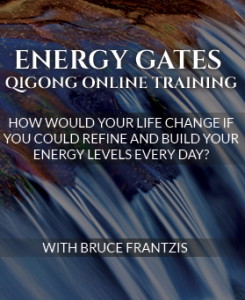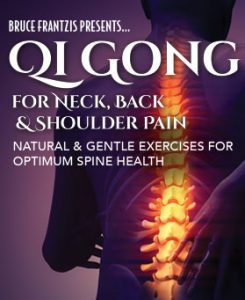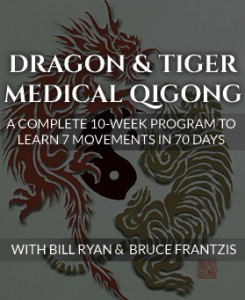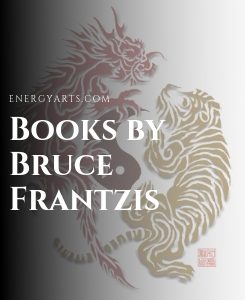By Senior Instructor Jamie Dibdin
Some years ago I had a minor operation that was supposed to help me with a varicose vein problem in my left leg. The prospect of the operation was worrying because I had heard of various ways in which it had affected peoples’ ability to practice afterwards. For me the lead up to having the op was horrific. In the end it was a one day ordeal and was over quicker than I expected. The operation I had was not a whole-scale stripping of the affected vein, but a selective cutting away of the worst tissue.
I used Dragon and Tiger Qigong a lot before going into the clinic and indeed on the day, both before and after the op. I was practicing the Chi Field exercises from that set and Heaven and Earth Qigong to aid my recovery. It worked well and I was back to regular work and practice within a week or so.
Later on I was to find out that while the operation helped and it was easy to recover, it did not have any effect on what was the bigger problem I was suffering from: edema or swelling mainly caused by a buildup of excess water. In fact, no one even mentioned edema before the operation. Only afterwards did I find out what it was and what it meant in practical terms. With edema fluids collect in the lower leg and, because of reduced venous return, cannot be easily ignored. Some of the pictures I was shown by my doctor convinced me that the compulsory wearing of a pressure stocking would be necessary and essential to stop this condition from becoming more problematic.
Using the exercises presented below I was able to avoid wearing a pressure stocking everyday. In fact, the only times I need to use one is for some long-haul flights or sometimes for the day after flying as there is a tendency for fluids to pool in the legs due to sitting for long periods and pressurization of the aircraft. Another factor that still requires me to wear one is temperature. If the temperature is too high it tends to pull the fluids down and cause excessive expansion of the tissues around the lower ankle/foot.
For example, at the 1999 Wu Style Tai Chi Short Form Instructor Training I became overly aware of this as the course took place in sunny California. Over subsequent years of attending these courses, I was able to see how effective the advice I got from Bruce has been in relieving my edema.
Below I have presented, chronologically, the exercises that have helped alleviate my edema. I recommend getting a Certified Instructor to show you them and how to practice them for best results. You will obviously need to put in some time in to get the full benefits, but the time investment is worth it. Sometimes you will only need a short time, 10-15 minutes, sometimes longer, maybe half an hour or so. Brian Cooper’s “Art of Micro Practice” article will give you ideas about how to make time.
1. Dragon and Tiger Qigong’s releasing of stagnant chi, both the basic flicks (Level 1) and the etheric-boundary Releases (Level 2).
Both improve blood and other fluid flow, which first took away the heaviness I had in my legs. It is especially beneficial when the release is unimpeded-all the way to the edge of your etheric field. There’s nothing better than getting that clear, continuous release to the end of your field and then pulling back clean energy.
2. Moving fluids directly with your mind.
Using your ability to feel the fluids in your legs, get them to pull inwards towards the bones and then pull them up. Sometimes it’s more effective if you go up the yin sides, inside your leg and then push the fluids down again out to the yang surface outside of the leg. You can also return through the yin, but the push needs to finish in your toes for optimum results.
3. Toe kicks and heel kicks.
The action of extending the toes in toe kicks encourages blood to reach the extremity of the toe tips. Heel kicks, by affecting the blood vessel inside of the ankle, are key in getting blood and fluids to return up the body. You can also work on this in Bagua Circle Walking and tai chi, although I’ve found that Circle Walking is more effective in the long-term.
For example, each step in tai chi you place the ankle down, which assists venous return up the leg. The action of pulling the toes up and focusing on the yin surface of the body helps this to happen and can be further helped when loading the weight onto the foot. Venous return is then helped by the opening of the joints/kwa/stretching of the leg upwards and also focusing on the yin surface to assist in pulling blood and chi up the leg and back into the torso.
Similarly in Bagua Zhang stepping, the action of extending the toes in the forward step before the toes touch the floor or “brake” helps to get the downward flow of blood to happen. Then, when the heel touches the floor, this helps to both complete the downward flow and initiates an affect on the vein inside the ankle. This also opens the joints/kwa/stretching of the leg upwards while you’re focusing on the yin surface to assist in pulling blood and chi up the leg and back into the torso.
Because this happens in every step in ba gua it makes the venous return happen more strongly than in tai chi, in my experience. Concretely, this means that a weekend course of tai chi only can result in a minor swelling of my left leg whereas a ba gua only weekend course does not show the same outcome.
If you do not do either of these arts don’t panic! Just stand on one leg, using your hands on a chair for support, and practice toe/heel kicks maybe in sets of 10 or 20 to get the same result.
4. Field Pulsing
Using either energy ball practices from Dragon and Tiger Qigong or Marriage of Heaven and Earth Qigong, pulse from your hands to the central channel in your legs. Then pulse the chi very lightly (this needs a practical demonstration because it’s important not to strain the walls of the veins). The pulsing develops first locally and later spreads to the whole leg and to both legs to be most effective. When I asked Bruce he said to get the best results it wasn’t enough to focus on only the affected leg.
Senior Instructor Jamie Dibdin has studied with Bruce since 1987. He teaches a select group of students, preferring to develop practitioners who can use the health, fighting and meditative aspects of Wu Style Tai Chi.





0 Comments